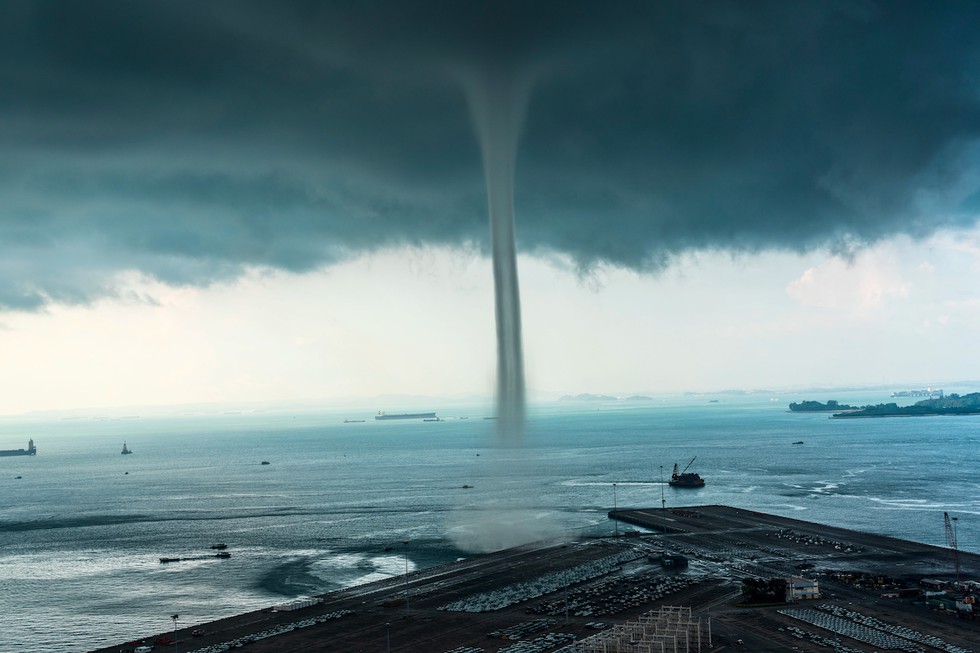About Waterspouts:
- Waterspouts are significant atmospheric phenomena characterised by rotating columns of air that form over water bodies. These tornado-like structures typically develop overseas or in large lakes, presenting a spectacular display of nature's power.
- It is a weaker version of a tornado, typically lasting 5-10 minutes.
- Average diameter is around 165 feet (50 meters).
- Wind speeds can reach up to 100 km/h (60 mph).
Formation of Waterspouts:
- The formation of a waterspout varies depending on its type:
- Fair-weather waterspouts occur when cool air flows over open water, pulling water upwards and creating the waterspout.
- Tornadic waterspouts are more likely to form during thunderstorms. Some may even start as tornadoes on land and then move over water. These waterspouts typically develop in the sky and extend downward.
- Waterspouts evolve through a distinct five-stage process:
- Dark spot: A light-coloured disk becomes visible on the water’s surface, surrounded by a darker area with blurred edges.
- Spiral pattern: Bands of light and dark colours spiral outward from the dark spot.
- Spray ring: The dark spot creates a swirling mass of sea spray, resembling the eye of a hurricane.
- Mature vortex: The spray ring forms a spinning funnel that stretches from the water’s surface to the clouds above.
- Decay: As warm air disrupts the vortex, the waterspout weakens and dissipates.
- The key to waterspout formation is the presence of cold air cycling over warm water. When these conditions align, a waterspout can develop.
- While most common in tropical and subtropical regions, waterspouts can occur in various parts of the world, including Europe, the Middle East, and even Antarctica.
Types of Waterspouts:
- Tornadic Waterspouts:
- Essentially tornadoes over water.
- Associated with severe thunderstorms.
- Can be accompanied by dangerous conditions like high winds, large hail, and frequent lightning.
- Fair Weather Waterspouts:
- Form under calmer conditions, often along the base of developing cumulus clouds.
- Generally not linked to thunderstorms.
- Develop from the water's surface upward.
- Typically move very little due to light wind conditions.
- Snowspouts:
- These are exceptionally rare waterspouts that develop under the base of a snow squall.
- They are occasionally known as snow devils and are typically weak, although, in certain instances, they can reach the strength of an EF1 tornado.
- Recent research from the University of Barcelona suggests a correlation between warmer sea surface temperatures and increased waterspout formation.
- For instance, the sea surface near Sicily has been observed to be 2.5 to 3 degrees Celsius warmer than the 1990-2020 average, potentially contributing
